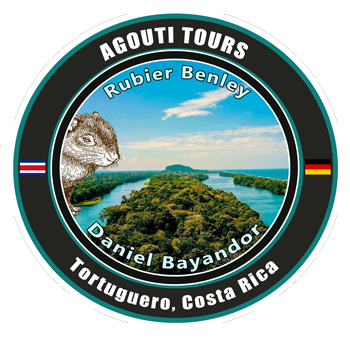Tortuguero – By Agouti Tours

Tortuguero:
About Tortuguero, Costa Rica: A Nature Lover’s Paradise
Introduction to Tortuguero
Tortuguero, or the “Region of Turtles,” is a small, culturally diverse village located on Costa Rica’s northeastern Caribbean coast, about 50 miles north of Limon. This remote and unique village is a melting pot of Hispanic, Miskito Indian, and Afro-Caribbean cultures, where both Spanish and Creole English are spoken. Tortuguero is part of the Tortuguero Plain, a vast, low-lying area covered in dense tropical rainforest, making it a natural wonderland rich in biodiversity.
Tortuguero National Park: A Haven for Wildlife
Tortuguero National Park, established in 1970, spans over 19,000 hectares (46,900 acres) and protects 22 miles of vital nesting beach along the Caribbean coast. This park is part of the largest remaining tract of lowland wet tropical forest on Costa Rica’s Atlantic coast, making it a crucial habitat for many species of wildlife, including jaguars, tapirs, green macaws, and various monkey species.
One of the park’s most significant roles is its protection of endangered sea turtles. The green turtle population, which once faced extinction, now thrives here due to the conservation efforts initiated by the Sea Turtle Conservancy (STC). Other species, such as the giant leatherback, hawksbill, and loggerhead turtles, also nest on Tortuguero Beach, making it one of the most critical nesting sites for sea turtles in the Western Hemisphere.
The Importance of Sea Turtle Conservation
Since the 1950s, the STC has been working tirelessly to study and protect sea turtles in Tortuguero. Their monitoring programs, which involve tagging and tracking nesting turtles, have helped scientists better understand turtle behavior and population trends. In 2000 alone, over 2,600 green turtles were tagged, along with several hawksbill and leatherback turtles. These efforts have contributed to the ongoing recovery of these endangered species.
A Shift Toward Ecotourism
Recognizing the need to balance conservation with local customs, the STC partnered with Tortuguero’s residents to promote ecotourism. Villagers, who once relied on turtle hunting for income, are now proud protectors of the turtles and guides for visitors. Tourists from around the world visit Tortuguero to witness the spectacle of sea turtles nesting on its beaches and explore the lush rainforests of the national park. Each year, around 50,000 tourists visit Tortuguero, providing a sustainable income for the local community while protecting its natural treasures.
The Lush Environment of Tortuguero
Tortuguero is known for its warm, humid climate, with daily temperatures averaging 26°C (79°F) and annual rainfall exceeding 200 inches. The region’s intricate network of blackwater canals, swamps, and rainforests creates a dynamic and thriving ecosystem. From swamp forests near the coast to towering evergreen forests inland, the diversity of plant and animal species in Tortuguero is among the highest in Costa Rica.
Tortuguero is home to a rich variety of wildlife, including 57 species of amphibians, 111 species of reptiles, and 60 species of mammals. Over 300 bird species either live in or migrate through the area. Visitors can often spot keel-billed toucans, herons, egrets, sloths, monkeys, and even elusive animals like jaguars and Baird’s tapirs.
Conclusion
Tortuguero, Costa Rica, is not just a beautiful destination—it’s a symbol of successful conservation and community collaboration. Its stunning natural landscapes, combined with the incredible biodiversity of its national park, make it a must-visit for nature enthusiasts, adventurers, and eco-conscious travelers. By choosing to visit Tortuguero, tourists contribute to the ongoing protection of its fragile ecosystem, ensuring that future generations can continue to enjoy this tropical paradise.
Tortuguero Costa Rica Picture Gallery








